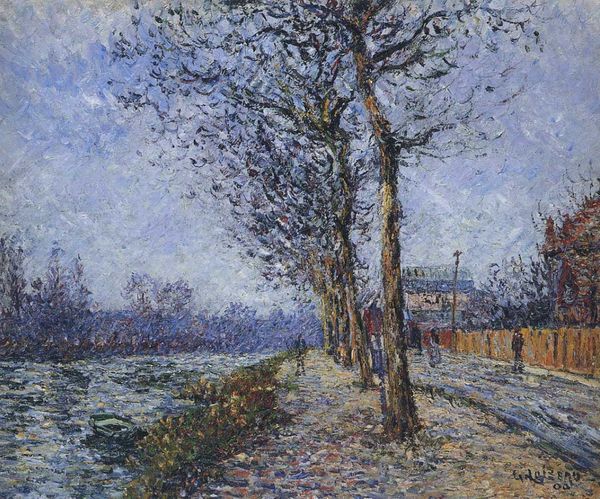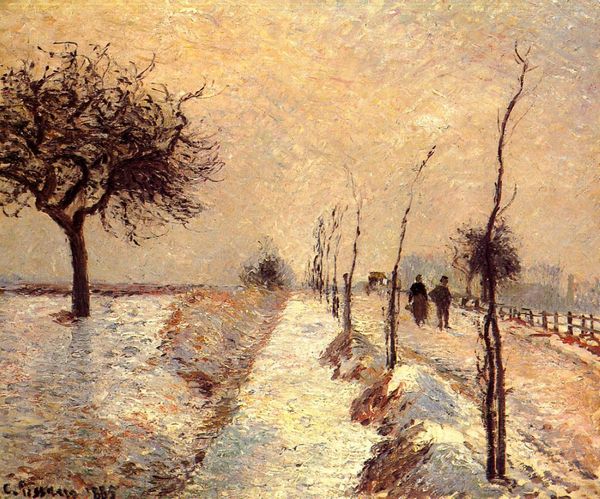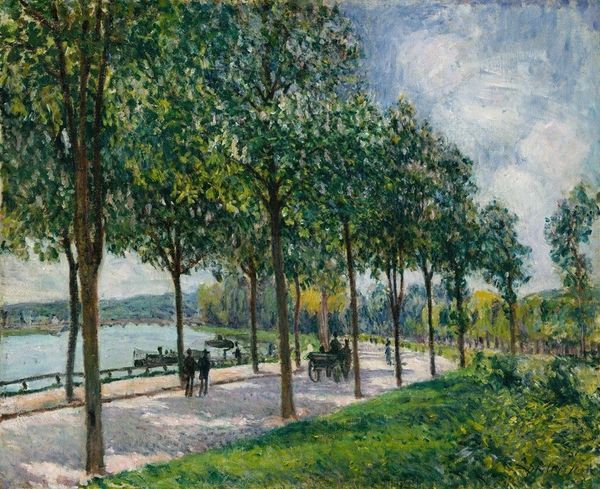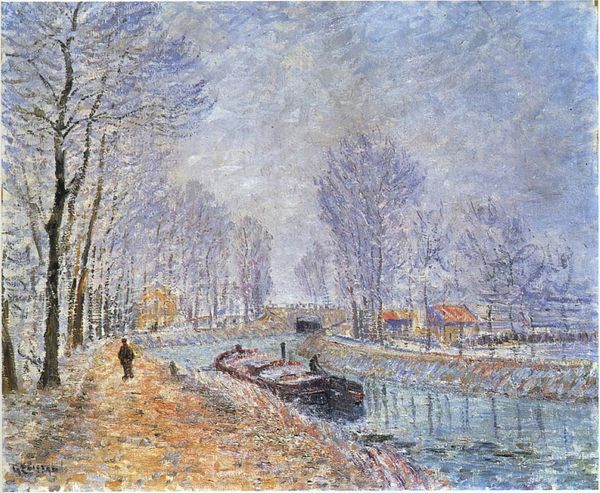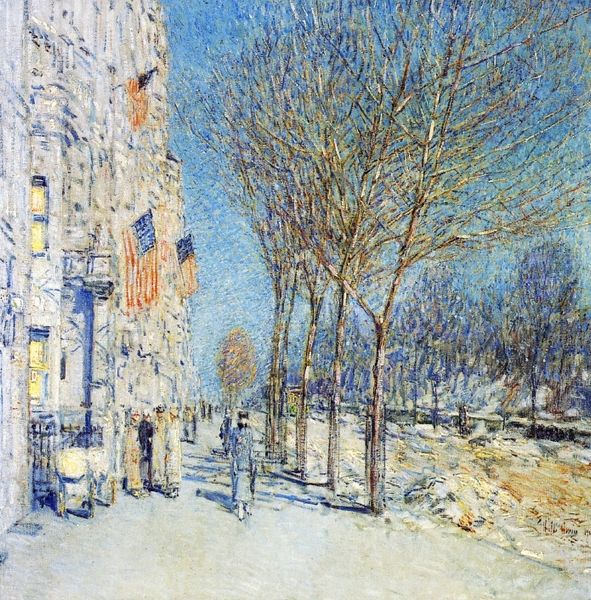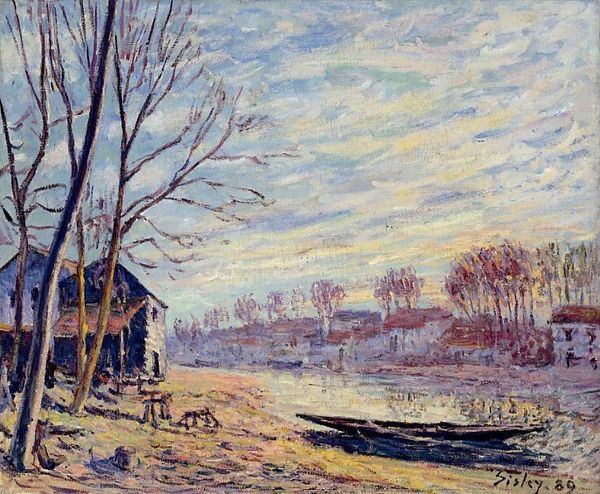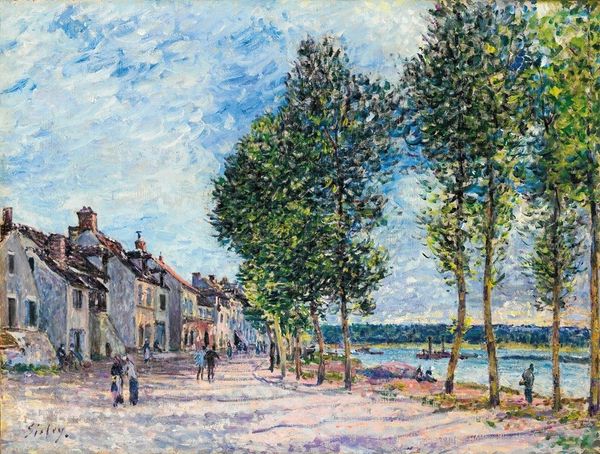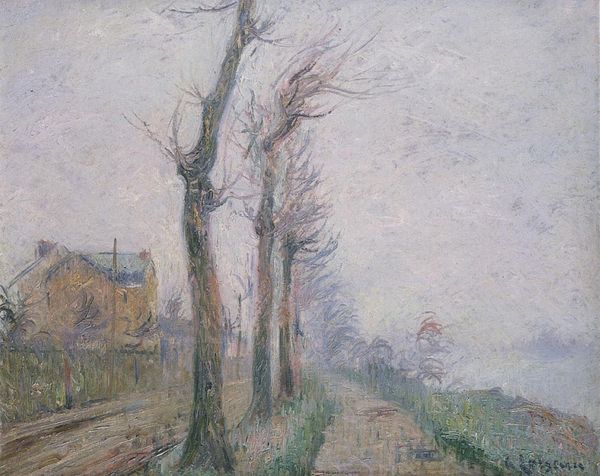
painting, plein-air, oil-paint
#
impressionist
#
painting
#
impressionism
#
impressionist painting style
#
plein-air
#
oil-paint
#
landscape
#
impressionist landscape
#
cityscape
Copyright: Public domain
Curator: Armand Guillaumin's 1875 painting, "La Place Valhubert," offers us a slice of Parisian life through the fresh eyes of Impressionism. It's a view of the city painted en plein air, focusing on the play of light and color across the urban landscape. Editor: Immediately, I'm struck by the mood – that hazy, almost melancholic feeling. The bare trees lining the Seine, the soft, diffused light... it speaks of a transient moment, caught just before winter's full arrival. Curator: Indeed, the fleeting moment is key to Impressionism's project. Guillaumin, though somewhat overshadowed by his contemporaries like Monet and Pissarro, was crucial in establishing the movement’s focus on modern life and the effects of industrialization on the environment. Think of the impact the Seine River held in creating industry! Editor: Absolutely. The river, rendered here with swirling strokes of muted greens and grays, carries layers of symbolism, doesn't it? It represents both the lifeblood and the changing face of Paris during this era – movement, industry, but also a sense of perpetual flux. The river can signify the conscious. Curator: And consider the setting, La Place Valhubert, near the Jardin des Plantes. This location held great cultural weight. Depicting it places Guillaumin directly within the urban debates shaping Haussmann's Paris: the creation of public parks, new traffic patterns, and new residential projects for the common people, versus the elite. The choice of where to place your easel speaks volumes about what the artist wants you to see. Editor: The bare trees also seem potent. They carry a sense of dormancy, anticipation. It reminds me of the bare branches in countless Romantic paintings, gesturing toward a spiritual connection between humans and nature, however subtle. Are these early modern artists trying to create the same link using city parks, with trees, and promenades, despite the obvious transformation of the natural environment? Curator: Precisely, and notice Guillaumin's brushstrokes. The rapid, broken marks create a sense of atmosphere. They dissolve the clear forms into a tapestry of color, mirroring the changing atmospheric conditions. This contrasts starkly with the realism of academic art at the time, reflecting a larger socio-cultural shift towards a subjective experience of the world. Editor: So it’s as if Guillaumin offers us more than just a visual representation of Paris. He delivers an emotive, psychological landscape filtered through his own perceptions and infused with symbols suggesting transition. I come away with a feeling of nostalgia. Curator: And I see an effort to democratize what is considered worthy of artistic representation, finding beauty and value in everyday scenes rather than grand historical narratives or aristocratic portraits. Editor: Beautiful. Each encounter peels back a layer to show a dynamic mix of cultural symbols and lived experiences.
Comments
No comments
Be the first to comment and join the conversation on the ultimate creative platform.
